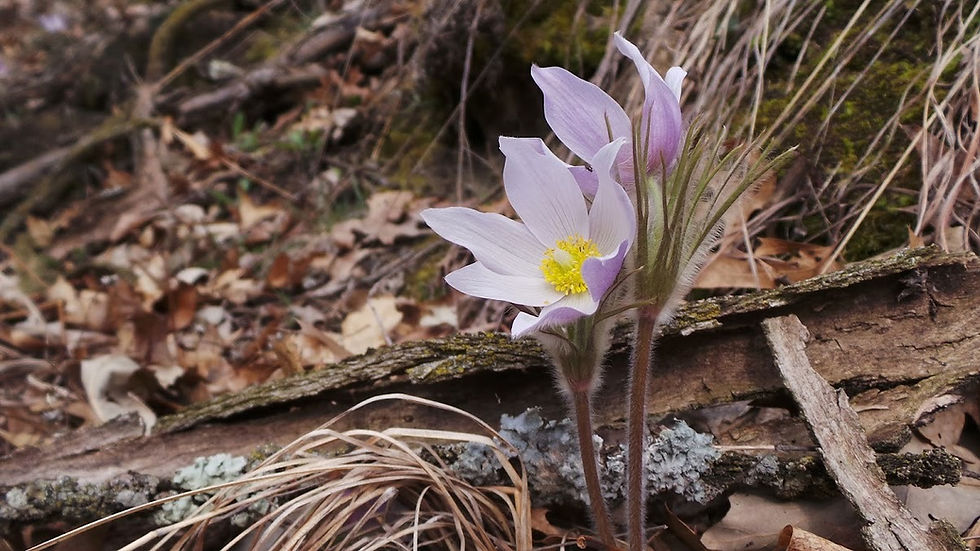by Olivia Clark
As the daylight shortens, I say my goodbyes to the color that fills the most joyous and memorable moments in my life - green.
The hue enters the Midwest’s landscape beginning in April with the first pasque flower on a warm, southern facing slope. The arrival of the season’s purples and light oranges are soon brought by bird’s foot violet and puccoons. Early spring emeralds emerge while the land around them is still asleep from the long winter, allowing them the attention of the awakening pollinators. To welcome these species into another year, one must expect an upward climb that will bring muddy boots and a feeling of new beginnings in the crisp spring air.

A few weeks later in a wooded area nearby, patches of wild geranium and Dutchman’s breeches flower under oaks budding out with new leaves. If you’re lucky, you may stumble upon a young fawn laying in a grouping of bedstraws.
The awakening green color is fully developed around June by the summer flowers eager to bloom. Fields of spiderwort and golden Alexanders buzz with the newly arrived pollinators. Each day, a seamless transformation occurs among the bloomers.
In the morning hours, heavy dew rests on the flowers that will leave your pant legs soaked in just a couple steps through the prairie. By mid-morning the dew is gone, and the flowers perk up at their peak bloom of the day. As the afternoon sun beats down on the prairie, many species start to close their petals to only be reopened the following morning.
The grasses take their turn at the end of July and reach heights near ten feet tall. Flowering plants become entangled in shoot systems of Indian grass and big blue stem. The density of the prairie has become challenging to navigate. The prairie has shifted to its greenest stage of organized chaos.

Goldenrods are the first plants to bring autumn’s fields of gold, followed by the purples of the asters. The discontinuance of the production of chlorophyll in the prairie tells us that we have completed another year. The root systems that have grown larger are now storing energy for next spring as the shoot systems turn to seed and slowly decompose. The cool temperatures of autumn have arrived, and the prairie is now dormant. The green color that was once so abundant and alive, is now absent until spring.
I am a Biology major and Environmental Studies minor at the University of Wisconsin – La Crosse. I spend my summers restoring and researching prairies so much so that I have fallen in love with them. Each winter, I find myself cycling through last year’s plant photos and daydreaming that it was a warm May afternoon on the prairie.
Hours of plant classes, months of green-withdrawal and visits to Home Depot made me realize a monumental moment in my life: Why say goodbye to the many shades of green with winter approaching, when you can have house plants?

Olivia is 21 years old and attends the University of Wisconsin - La Crosse. Follow Olivia's plant-y adventures on twitter and instagram.

Comments